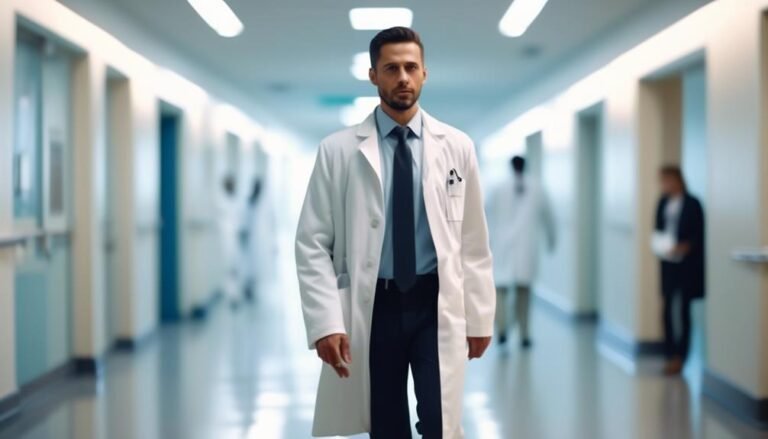Career Paths After Graduating from an X-Ray Program
Medical imaging is vital to healthcare—without it, doctors would be guessing more than diagnosing. X-rays, in particular, are a mainstay, popping up everywhere from emergency rooms to routine checkups. That’s why finishing an X-ray program is such a solid move: it’s a ticket to steady work and real impact. Graduates have options—hospitals, clinics, or niche imaging centers are all in play. Some might even keep studying to climb higher. Every path has its own way of growing your skills and letting you specialize in something that matters.
Becoming a Radiologic Technologist
One of the most common career paths after completing an X-ray program is becoming a radiologic technologist. It’s the backbone role: you’re running the machines, taking images of everything from broken bones to chest scans, and handing doctors the clues they need. Safety’s a big deal—radiation’s no joke, so you’re always double-checking protocols to protect patients and yourself.
Jobs are out there in spades—hospitals, private offices, even urgent care spots. You might find yourself in the thick of an ER, imaging crash victims, or in an orthopedic practice, zeroing in on a tricky fracture. Employers love seeing a certification, and in some states, you’ll need a license too, which means extra tests or coursework. It’s a practical first step that sets you up nicely.
Specializing in Computed Tomography (CT) Scans
If you’re itching to dig deeper, computed tomography—CT scanning—might call your name. CT techs work with cutting-edge gear to slice up detailed views of the body, catching things like tumors or bleeds that regular X-rays might miss. It’s a step up in precision, and doctors lean on it heavily.
Hospitals and diagnostic centers are on the hunt for CT-trained pros—the need keeps ticking up. You’ll have to snag a certification, but it’s worth it; the pay bumps up, and the work gets more interesting. Some techs handle urgent scans in emergency settings; others stick to scheduled cases in outpatient clinics. Either way, you’re adding real value to patient care.
Working in Magnetic Resonance Imaging (MRI)
MRI’s another route worth exploring. Instead of radiation, MRI techs use magnets and radio waves to map out organs, spines, or brains in stunning detail. It’s a go-to for tricky diagnoses—think neurological issues or joint damage.
A lot of X-ray grads tack on MRI training to open more doors. It takes effort—extra courses, hands-on practice—but then you’re set for jobs in hospitals or advanced imaging suites. You’ve got to be good with the tech and great with people; some patients get jittery in the machine, and you’re the one keeping them steady. It’s a blend of brain and heart that pays off.
Exploring a Career in Mammography
Mammography’s a niche worth considering—focused entirely on breast imaging to spot cancer early. It’s detail-driven: you’re ensuring every image is crystal clear while walking patients through the process with care and clarity.
Some states want a special cert for this, and experience helps you stand out. It’s huge for women’s health—those screenings can be life-savers. You might work in a clinic doing yearly checks or dive into diagnostics for tougher cases. It’s a role where precision meets purpose.
Advancing into Interventional Radiology
Interventional radiology takes things up a notch. Here, you’re not just imaging—you’re helping doctors fix problems, guiding needles or catheters for stuff like biopsies or artery repairs, all without big incisions.
It’s a hospital gig, usually, and it demands more training and a knack for tech. You might focus on heart cases or brain work as you grow. The pace is fast, the stakes are high, and you’re right in the action—perfect for anyone who wants imaging to feel more hands-on.
Opportunities in Radiation Therapy
Radiation therapy’s a different beast—less about diagnosing, more about treating. You’re working with cancer patients, delivering pinpoint radiation to shrink tumors, all while keeping them comfortable and safe.
You’ll need extra credentials and schooling, but it’s a steady field with room to grow. Cancer centers and hospitals need these skills badly. Some days, you’re in an outpatient clinic running daily sessions; others, you’re in a hospital tackling intricate plans. It’s intense, but you’re making a tangible difference.
Teaching and Research in Radiologic Technology
Down the line, if you’ve got experience to spare, teaching or research could beckon. Teaching means training the next wave—maybe in a college classroom or a hospital lab, showing them how to handle machines and patients right.
Research is about pushing boundaries—working with labs or companies to tweak imaging tech or cut radiation risks. Both let you give back, shaping the field’s future. Whether you’re explaining safety to a newbie or testing a new scanner, it’s a way to keep learning and leading.
Conclusion
An X-ray program isn’t just a finish line—it’s a launchpad. Starting as a radiologic technologist gets you in the door, but there’s so much more: CT, MRI, mammography for specialization; interventional work or radiation therapy for action.
Teaching and research let you guide what’s next, or you could aim for leadership in a healthcare setting. The demand’s there—imaging pros are key to medicine’s engine. Whatever you pick, you’re part of the patient care puzzle, blending skill with care in a field that’s always got room for growth.







